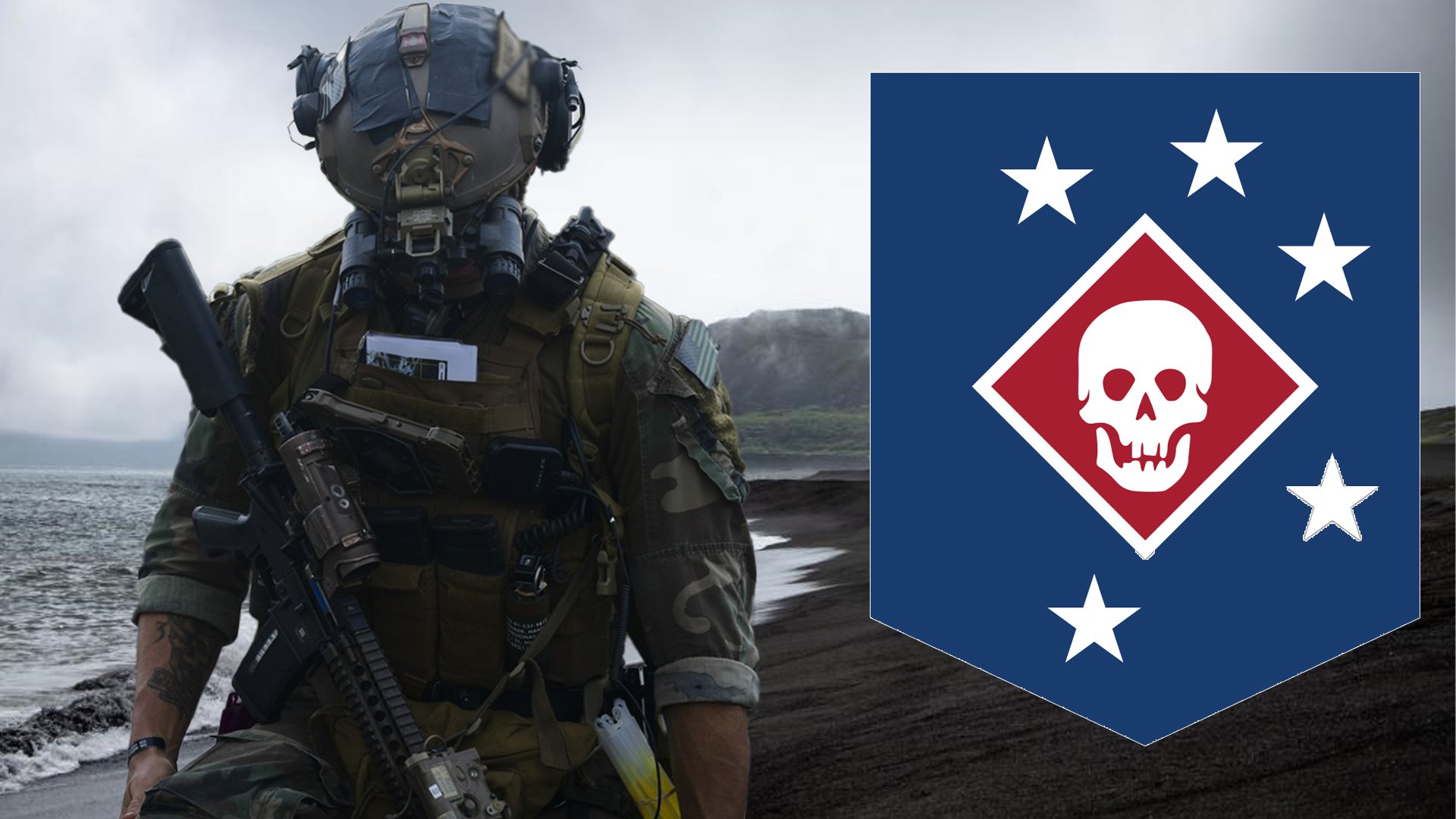
Marine Raiders are among the most elite troops in America’s special operations arsenal. Composite by Coffee or Die Magazine.
It was the evening of Aug. 17, 1942.
In addition to the enemy, the Marine Raiders were fighting exhaustion too. The men of 2nd Raider Battalion had just killed more than half of the Japanese soldiers on Makin Island. Now they had to get off the beach and into open waters, where a pair of US Navy submarines waited to extract them.
The Raiders paddled their inflatable boats through the crashing surf, but only about half of them managed to reach the vessels. The others reluctantly returned to the beach, many without their weapons. Though the Japanese had sustained heavy casualties, it was only a matter of time before the survivors rallied and overpowered the relatively defenseless Raiders.
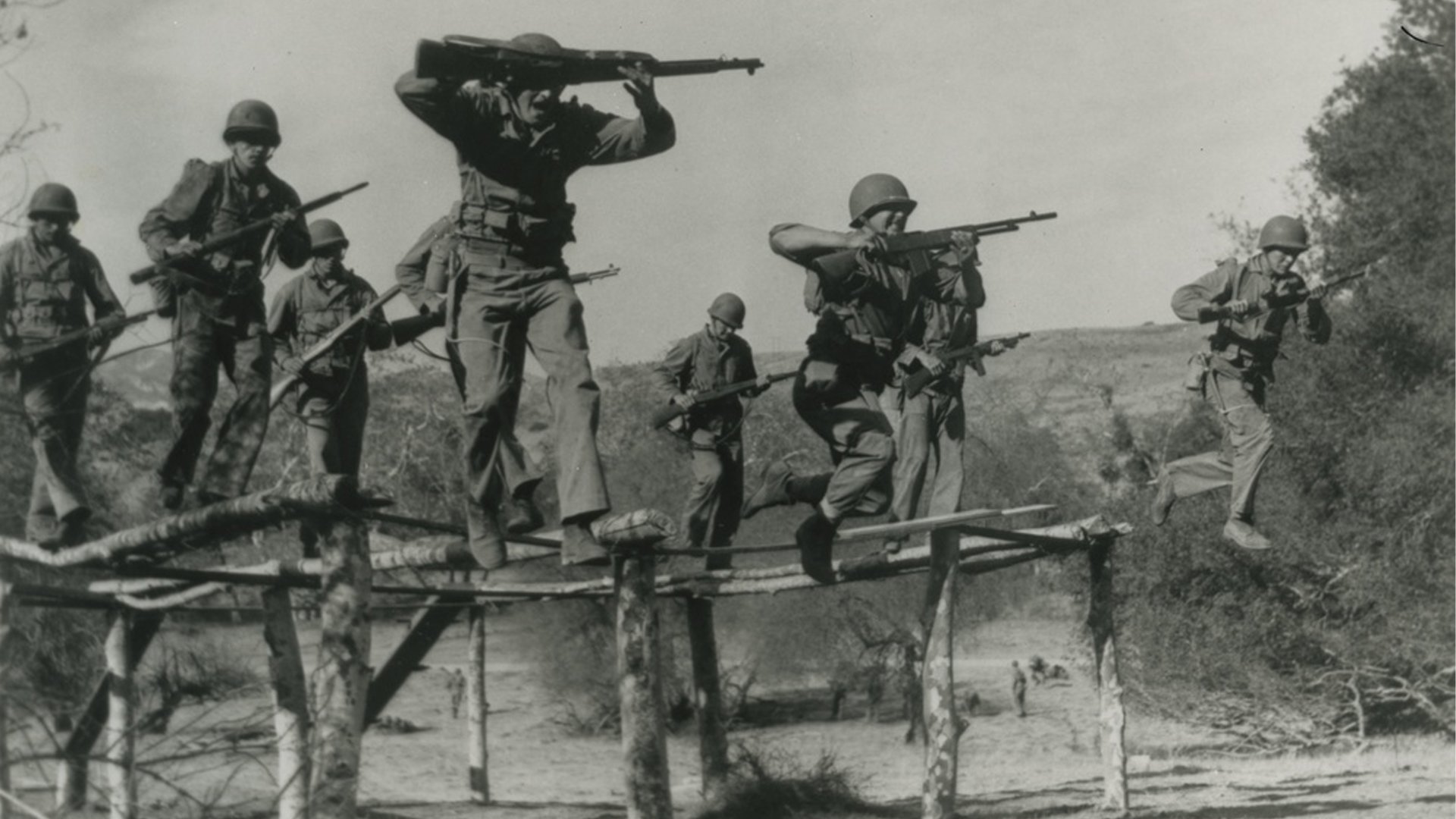
These United States Marine Raiders dash at full speed along narrow poles. It's part of their training at Camp Pendleton, California to make them the finest combat organization in the world. US Marine Corps photo, courtesy of Wikimedia Commons.
A rescue watercraft was dispatched to retrieve the stranded Raiders, but it was immediately sunk by a Japanese plane. At that point, the Raiders ditched their heavy equipment. They signaled to the submarines to move to the calmer waters of a nearby lagoon. Then, with the remaining rubber boats and several abandoned canoes, they built a large raft.
Amid the chaos of the hasty withdrawal, not all of the Raiders made it onto the raft. Those who did sailed to the submarines and were ferried off to safer waters, alive to fight another day. Eleven Marines were left behind. Of them nine were eventually captured by the Japanese and beheaded; the fates of the other two are unknown.
Nevertheless, the mission would be remembered as a major success for the newly formed Marine Raider battalions.
One of the first American offensive ground operations against imperial Japan, the raid on Makin Island marked a significant escalation of US military involvement in World War II. It exposed weak points in Japan’s coastal defenses. And it set the stage for the island-hopping campaign that culminated three years later with Japan’s unconditional surrender.
The raid on Makin Island was also one of the first operations carried out by the Marine Raiders. The Raiders were an experimental unit formed in 1942 for the purpose of conducting small, commando-style amphibious raids. In the eight decades since, the scope of the unit’s mission has grown, but the legacy of their World War II predecessors is ingrained in the Raiders’ DNA.
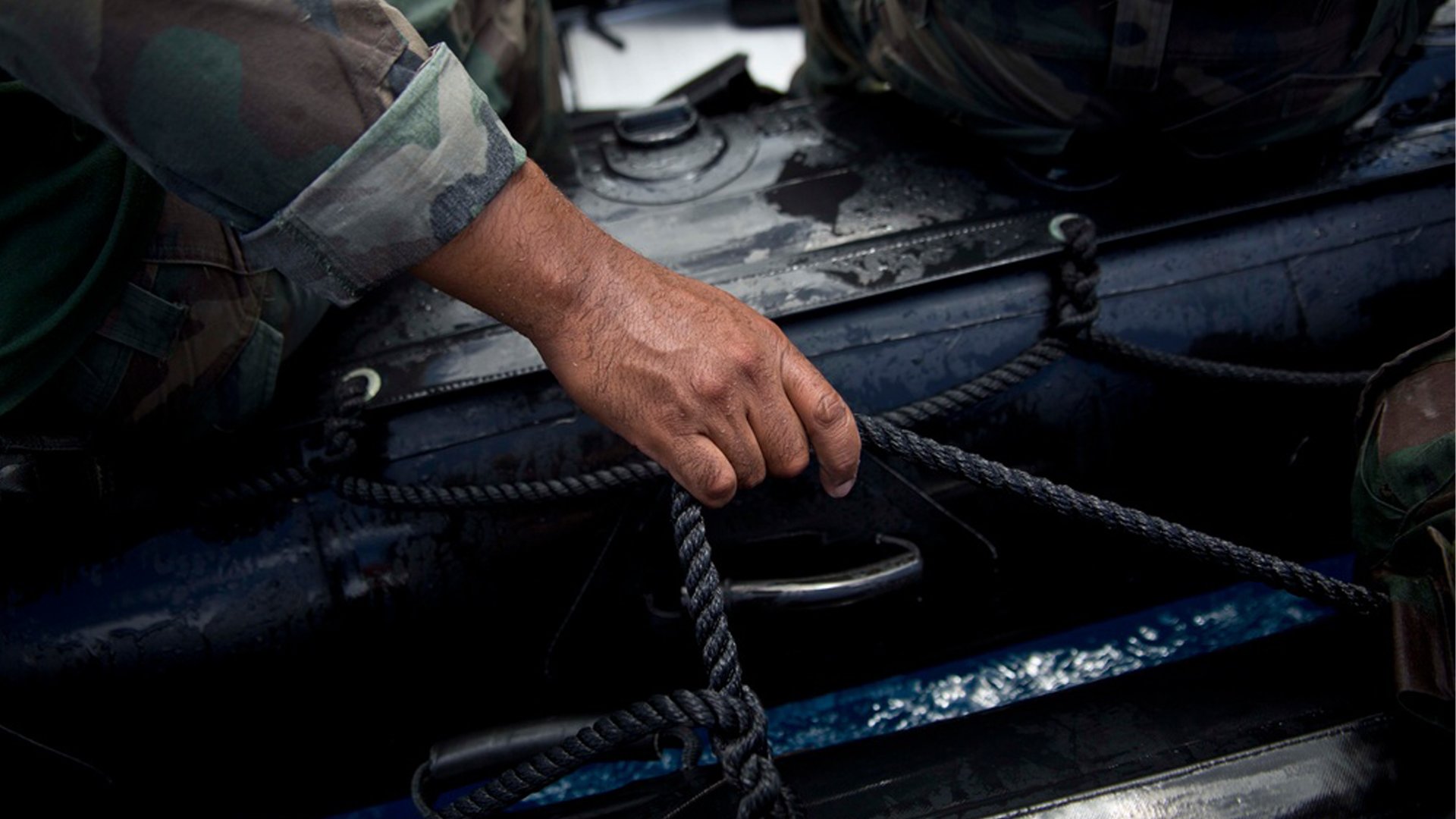
U.S. Marines with 1st Raider Battalion Marine Special Operations Team (MSOT) 8123, conduct amphibious operations aboard combat rubber raiding craft (CRRC). The raiders also sustained amphibious operations capability to clandestinely insert scout swimmers and follow on support. US Marine Corps photo by Lance Cpl. Jacob Snouffer.
As the Corps’ only special operations unit, the Raiders expand upon the branch’s role as an expeditionary force. They are often tasked with complex missions in places that are out of reach of conventional Marines. Yet, despite their long and storied history, the Raiders occupy a gray area between special operations and regular infantry. Perhaps that’s because they have proved exceptional at both.
So who, exactly, are these elite warriors? And what distinguishes them from other American warfighters?
Related: Salty Dogs: The Long and Proud Tradition of Tattoos in the Marine Corps
Who Are Marine Raiders?
Marine Raiders are the only unit within the Marine Corps that reports directly to United States Special Operations Command (SOCOM). They specialize in direct action, unconventional warfare, maritime interdiction, special reconnaissance, foreign internal defense, counterterrorism, and counterinsurgency, among other things.
The Marine Corps has always considered itself an elite branch of the US armed forces. However, the Marines did not contribute a component to SOCOM until 2006, when they formed Marine Special Operations Command (MARSOC). In 2014 the Marine Corps rebranded MARSOC as Marine Raiders in honor of the unit’s WWII origins.
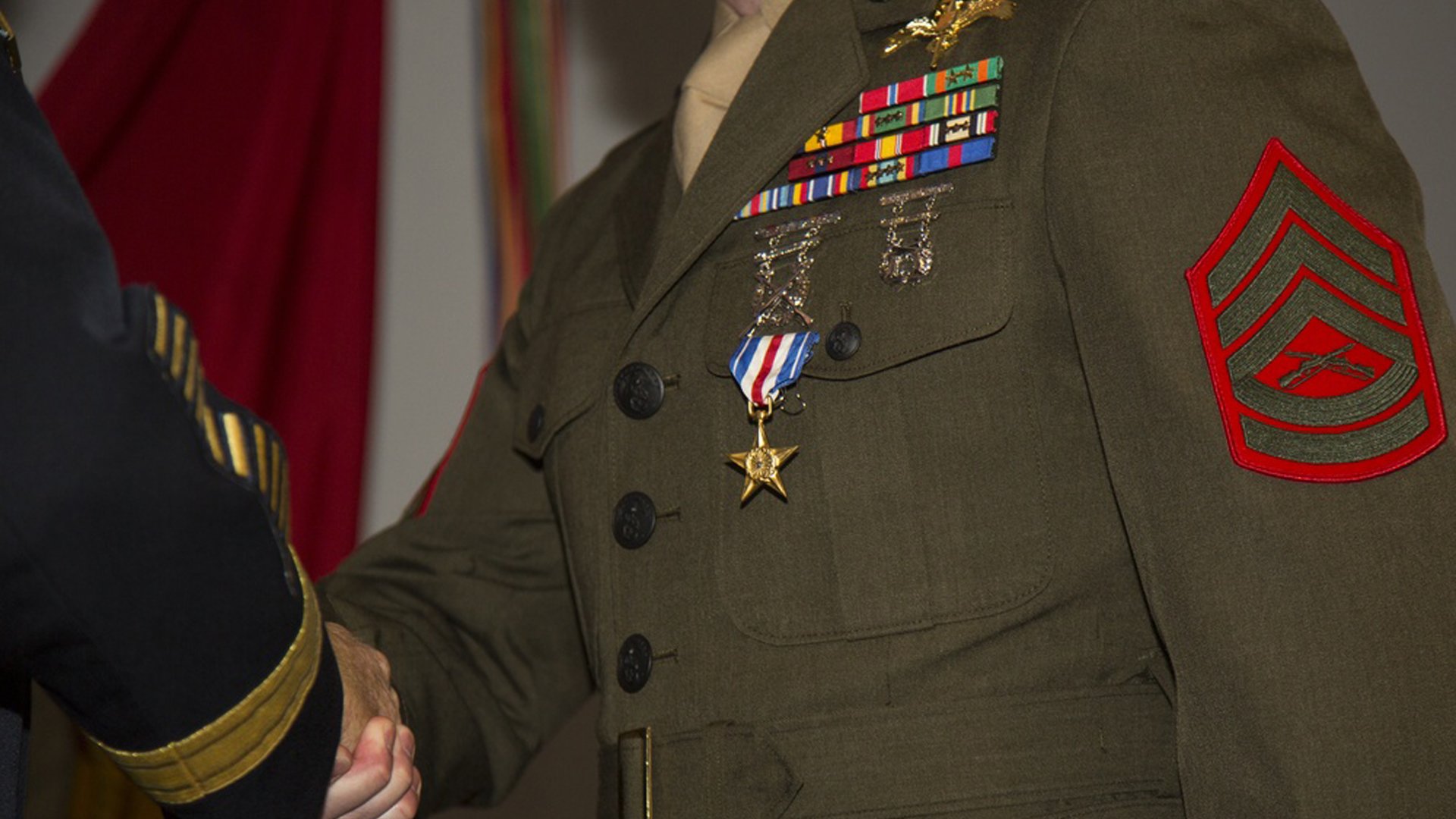
A critical skills operator with 3rd Marine Raider Battalion, Marine Raider Regiment, U.S. Marine Corps Forces, Special Operations Command, receives the Silver Star aboard Marine Corps Base Camp Lejeune, N.C., April 6, 2018. The Silver Star is awarded to service members who display conspicuous gallantry in action while serving the U.S. in operational environments and is the third highest award that can be given to a member of the U.S. armed forces. The Marine Raider received the award for outstanding leadership and acts of bravery while leading a small team to rescue over 170 hostages taken by a terrorist group in Mali in 2015. Their actions saved more than 150 lives and bolstered the relationship between the U.S. and the partner nation. US Marine Corps photo by Marine Sgt. Janessa K. Pon.
Today, Marine Raiders are organized as a single regiment comprising three battalions with rotating regional focuses. The 1st, 2nd, and 3rd Raider Battalions take turns being responsible for conducting operations under AFRICOM, CENTCOM, and INDOPACOM.
Since 2006, Marine Raiders have deployed more than 300 times to over 40 different countries. They have fought and killed Taliban fighters at hand grenade range. They’ve cleared ISIS strongholds in Iraq, and they’ve waged battle against al-Shabab terrorists in Kenya. Their actions on the myriad battlefields of the War on Terror have earned them more than a dozen medals for valor.
Related: Don’t Give Up the Ship: Why the Navy’s Mantra Really Belongs to the Marines
Gung-Ho! America’s First Special Operations Unit
Although relatively new to SOCOM, the Marine Raiders can lay claim to being America’s very first operators. In fact, the elite Marines have even been around longer than the Army Rangers, by four months. That makes them the oldest official special operations unit in the US military.
Following the Japanese attack on Pearl Harbor, President Franklin D. Roosevelt became interested in creating a special operations unit that mirrored the British Commandos. He believed such a unit would make a natural component of the Marine Corps, given its reputation as a highly adaptable force. However, Thomas Holcomb, then the commandant of the Marine Corps, had reservations.
As Holcomb saw it, the Marine Corps was already an elite fighting force. He worried that creating a more exclusive faction within the branch would be redundant. Then the Pacific fleet commander, Adm. Chester Nimitz, seconded the president’s request. At that point, Holcomb relented and greenlighted the formation of a Marine commando unit.
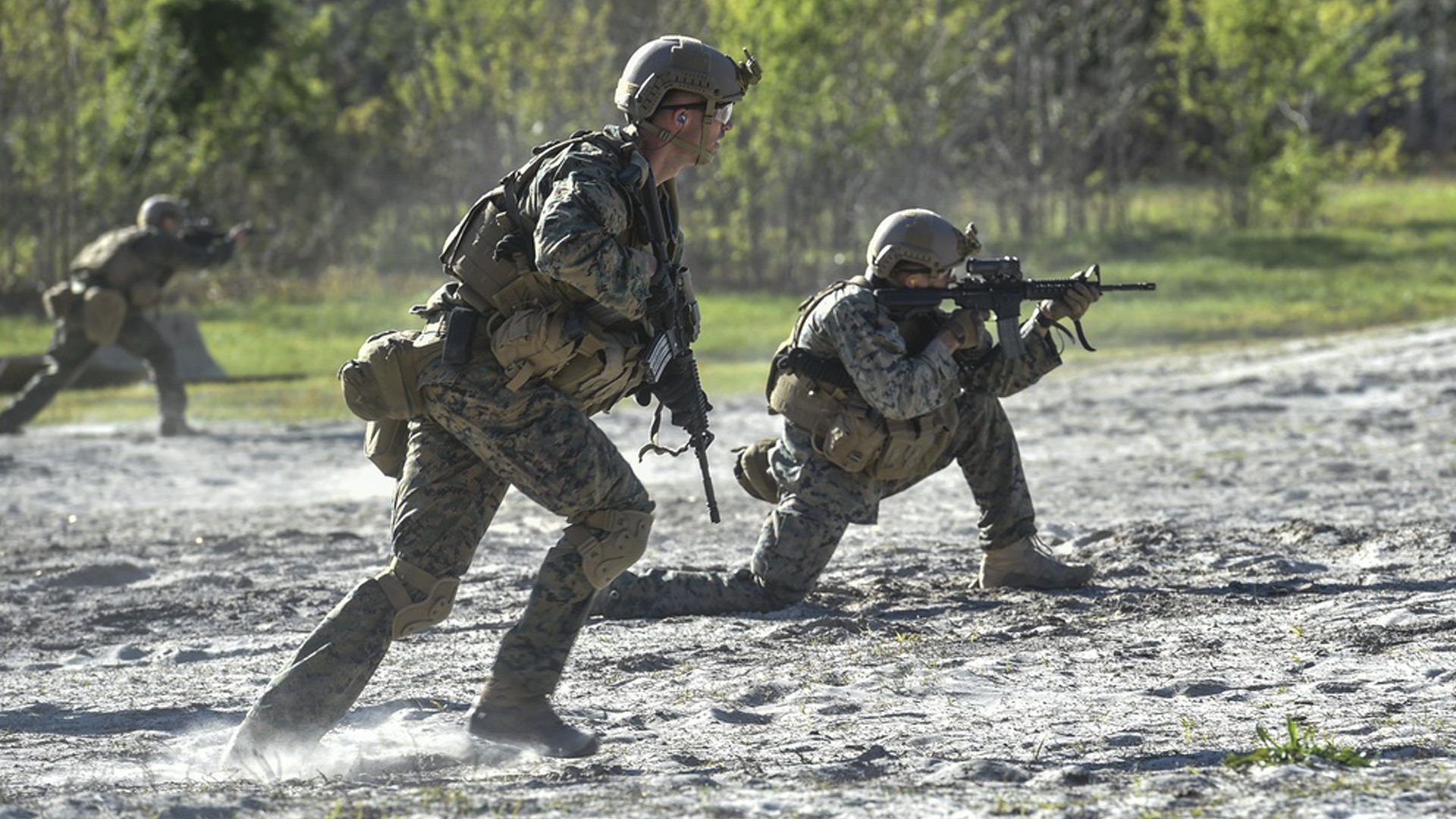
Marine Special Operations School Individual Training Course students run toward targets during live-fire maneuvering training, April 11, 2017, at Camp Lejeune, N.C. For the first time, U.S. Air Force Special Tactics Airmen spent three months in Marine Special Operations Command’s initial Marine Raider training pipeline, representing efforts to build joint mindsets across special operations forces. US Air Force photo by Senior Airman Ryan Conroy.
In February of 1942, two battalions of Marine Raiders were activated at Quantico, Virginia. Lt. Col. Merritt “Red Mike” Edson was selected to command the 1st Raider Battalion. And Lt. Col. Evans Carlson was selected to lead the 2nd Raider Battalion. The units comprised roughly 2,000 Marines who had been hand-picked for the experimental assignment.
Both Raider battalions got their first taste of combat in August 1942. Edson’s 1st Raider Battalion conducted a successful raid on the Japanese-held island of Tulagi. Ten days later, Carlson’s 2nd Raider Battalion carried out the assault on Makin Island.
Encouraged by those early victories, the Marine Corps decided to expand its special operations capabilities. It promptly established two more Raider battalions.
The Raiders were instrumental in the battles for Guadalcanal, New Georgia, and Bougainville. By the war’s final stages, the scope of fighting in the Pacific had become so great that it was taking multiple divisions to wrest control of the heavily fortified islands occupied by Japan.

Marine Special Operations School Individual Training Course students fire an M240 machine gun during night-fire training April 13, 2017, at Camp Lejeune. US Air Force photo by Senior Airman Ryan Conroy.
In short, small teams of commandos had little to contribute to the large-scale assaults required to finish the war. On Feb. 1, 1944, the Raider battalions were officially disbanded and the Raiders were absorbed into regular infantry units.
Although the first Raider battalions existed for just two years, in that time their members earned seven Medals of Honor and 136 Navy Crosses.
Related: Bring Back These Brutal Marine Knife-Fighting Techniques From World War II
Are Marine Raiders Considered Tier 1 Operators?
Today’s Raiders stand shoulder to shoulder with other Tier 2 special operations forces like Navy SEALs, Army Rangers, and Green Berets. Typically, only members of a special missions unit such as DEVGRU, 1st SFOD-D, and 24th STS are considered Tier 1.
Every US special operations unit is capable of carrying out a broad range of missions. But each unit possesses certain specialties that distinguish its members from the rest. Navy SEALs are considered the premier unit for maritime interdictions, for example. The Green Berets are relied on for their ability to train and lead foreign militaries in counterinsurgency campaigns.
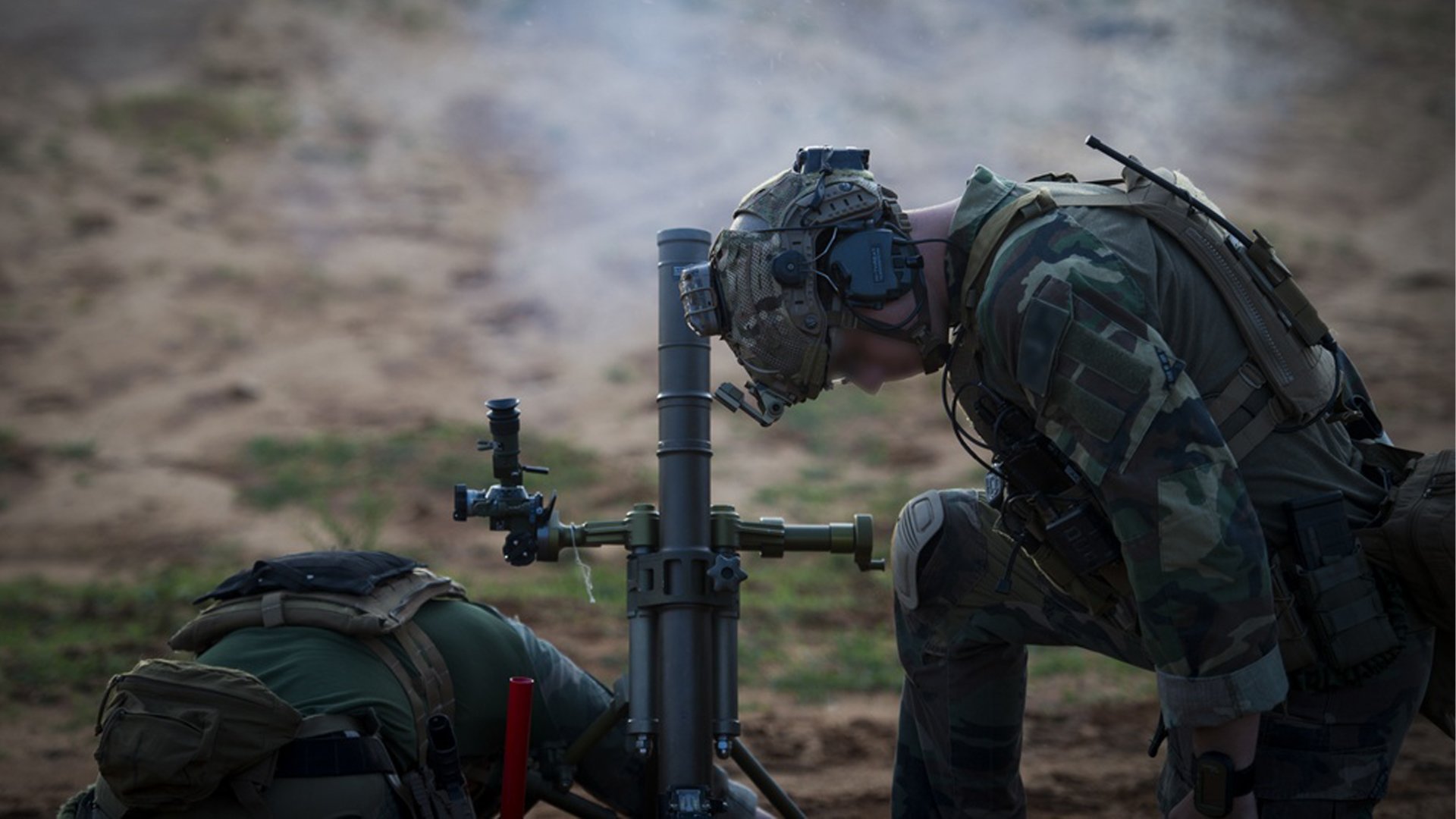
U.S. Marine Corps Raiders with the 3d Marine Raider Battalion fire an M224 mortar at Eglin Range, Fla., May 22, 2018. US Air Force photo by Senior Airman Joseph Pick.
While Marine Raiders train for nearly every type of mission, they’ve carved out a niche within the special operations community. In recent years, the Raiders have developed a singular skill set that might one day be considered their bread and butter: on-the-ground cyber warfare.
“Tactical cyber warfare is emerging as the niche for Marine Raiders,” a Marine staff sergeant with the 1st Raider Regiment told Coffee or Die, speaking on the condition of anonymity. “Our guys execute traditional SOF missions and still have the bandwidth to execute cyber operations on the ground in areas where conventional units cannot.”
Related: Frog Skin Camouflage Pattern: From Marine Raiders to the CIA
A Few Good Men
The Marine Corps currently maintains three Raider battalions, all of which fall under the 1st Marine Raider Regiment. Each battalion comprises four companies, and each company consists of four 14-man Marine Special Operations Teams (MSOTs). The MSOT is considered the primary unit for Marine Raiders.
In 1942, Holcomb was famously reluctant to create the Raiders. He believed any “standard Marine infantry battalion could execute any mission associated with British Commandos or Chinese guerrillas.” But just like the men who landed on Makin and Tulagi, today’s Marine Raiders continue to prove they are much more than ordinary grunts.
For that reason, Raiders tend to be better compensated for their work than most other Marines. The elite operators earn the same base pay as the rest of the military. However, the wide-ranging nature of their mission creates opportunities for them to make more money.

A Marine Raider with 1st Marine Raider Battalion jumps from the ramp of a CH-47 Chinook helicopter into the ocean during helocast training, Feb. 6, 2015, off the coast of Florida. US Marine Corps photo by Cpl. Steven Fox.
Raiders often receive additional pay because their deployments and training assignments tend to be hazardous enough to warrant extra financial compensation. For example, Raiders get more pay for attending military free fall and combat diver courses.
Despite the perks, most Raiders are not in it for the money. Those who strive to join their ranks typically do so because they want to become the best Marines they can be.
“Marine Corps culture helps create better operators,” said the anonymous Raider. “All the Marines who were proud of what they did and wanted to do more are now here in the Raider Battalions.”
Read Next: Who Has the Best Special Operations Motto? 7 Special Operations Mottos Ranked

Mac Caltrider is a senior staff writer for Coffee or Die Magazine. He served in the US Marine Corps and is a former police officer. Caltrider earned his bachelor’s degree in history and now reads anything he can get his hands on. He is also the creator of Pipes & Pages, a site intended to increase readership among enlisted troops. Caltrider spends most of his time reading, writing, and waging a one-man war against premature hair loss.
BRCC and Bad Moon Print Press team up for an exclusive, limited-edition T-shirt design!
BRCC partners with Team Room Design for an exclusive T-shirt release!
Thirty Seconds Out has partnered with BRCC for an exclusive shirt design invoking the God of Winter.
Lucas O'Hara of Grizzly Forge has teamed up with BRCC for a badass, exclusive Shirt Club T-shirt design featuring his most popular knife and tiomahawk.
Coffee or Die sits down with one of the graphic designers behind Black Rifle Coffee's signature look and vibe.
Biden will award the Medal of Honor to a Vietnam War Army helicopter pilot who risked his life to save a reconnaissance team from almost certain death.
Ever wonder how much Jack Mandaville would f*ck sh*t up if he went back in time? The American Revolution didn't even see him coming.
A nearly 200-year-old West Point time capsule that at first appeared to yield little more than dust contains hidden treasure, the US Military Academy said.












